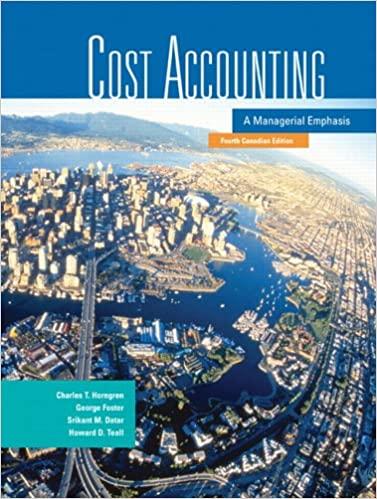Pertinent transfer price. Europa, Inc., has two divisions, A and B, that manufacture expen sive bicycles. Division
Question:
Pertinent transfer price. Europa, Inc., has two divisions, A and B, that manufacture expen¬
sive bicycles. Division A produces the bicycle frame, and Division B assembles the rest of the bicycle onto the frame. There is a market for both the subassembly and the final product.
Each division has been designated as a profit centre. The transfer price for the subassembly has been set at the long-run average market price. The following data are available to each division:
Estimated selling price for final product $360 Long-run average selling price for intermediate product 240 Incremental costs for completion in Division B 180 Incremental costs in Division A 144 The manager of Division B has made the following calculation:
Selling price for final product $360 Transferred-in costs (market) $240 Incremental costs for completion < 180 420 Contribution (loss) on product $ (60)
Required 1. Should transfers be made to Division B if there is no excess capacity in Division A? Is the market price the correct transfer price?
2. Assume that Division A’s maximum capacity for this product is 1,000 units per month and sales to the intermediate market are now 800 units. Should 200 units be transferred to Division B? At what transfer price? Assume that for a variety of reasons, Division A will maintain the $240 selling price indefinitely; that is, Division A is not considering lowering the price to outsiders even if idle capacity exists.
Suppose Division A quoted a transfer price of $180 for up to 200 units. What would be the contribution to the company as a whole ifthe transfer were made? As manager of Division B, would you be inclined to buy at $180?
Step by Step Answer:

Cost Accounting A Managerial Emphasis
ISBN: 9780131971905
4th Canadian Edition
Authors: Charles T. Horngren, George Foster, Srikant M. Datar, Howard D. Teall





